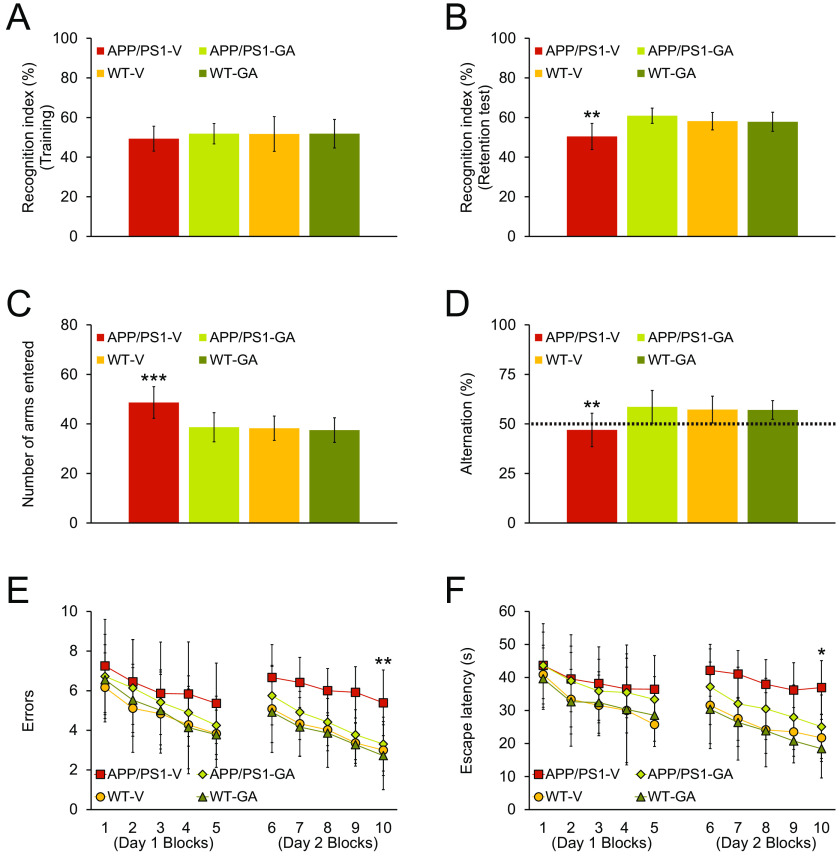Figure 1.
Oral GA therapy restores cognitive function in APP/PS1 mice. All mice were tested in a behavioral battery at 18 months of age. Recognition index (%) in the novel object recognition test is shown for training (A) and retention (B) phases. Y-maze test data are represented as total arm entries (C) and spontaneous alternation (D). Two-day radial arm water maze test data are shown with five blocks per day for errors (E) and for escape latency (F). Data were obtained from APP/PS1 mice treated with vehicle (APP/PS1-V, n = 12) or GA (APP/PS1-GA, n = 12), and WT littermates that were treated with vehicle (WT-V, n = 12) or GA (WT-GA, n = 12) for 6 months after baseline behavioral testing at 12 months of age. Data for A-F are presented as mean ± S.D. Statistical comparisons for A-F are between-groups. *, p < 0.05; **, p < 0.01; ***, p < 0.001 for APP/PS1-V versus the other treated mice.

